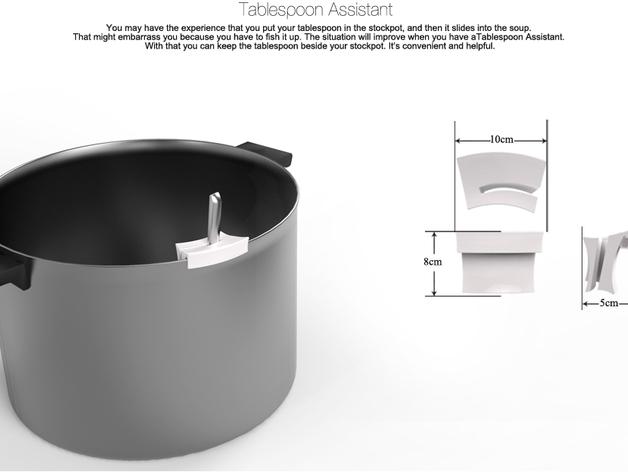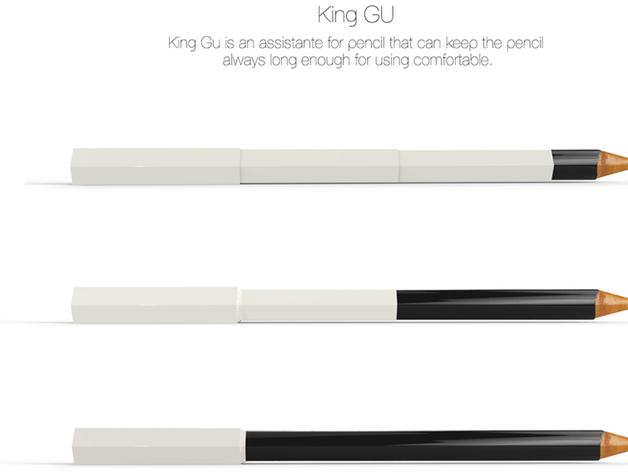 3D printing is a way for people of all kinds of backgrounds, and educational levels to design a product and then actually manufacture it without the typical high costs that traditional manufacturing would run. A group of 3 Chinese students studying in Italy have come up with some really unique ideas as part of a class assignment, in part because 3D printing made it feasible.
3D printing is a way for people of all kinds of backgrounds, and educational levels to design a product and then actually manufacture it without the typical high costs that traditional manufacturing would run. A group of 3 Chinese students studying in Italy have come up with some really unique ideas as part of a class assignment, in part because 3D printing made it feasible.
Shaohua Wu, Xiaoyu Han, and Tianmu Hong, are three young men in their mid twenties who are currently enrolled in a class called ‘Design of Product and Event’ at Genoa University in Italy. As part of a class project, they were asked to design something that could be 3D printed.
“We wanted to make a product that was really useful,” explained Shaouhua Wu. “We wanted the products to make our lives more convenient.”
Not only did this group come up with one useful product, but they came up with three.
The first, and what could be the most useful is a product that is meant to help with the hammering of nails. As you know, unless you are an experienced carpenter, it can be rather difficult to get a nail to go perfectly perpendicular into a surface. More importantly though, another issue that many people have is that they end up hammering their fingers instead of the nail. What Wu and his team members came up with was something that they call the “Hammer Assistant”.
“You may have the experience that you hurt your fingers when you are hammering a nail into the wall,” explained Wu. “With this product, you can hammer the nail into the wall perpendicularly without hurting yourself.”
The product comes in 2 pieces, that must be put together before a nail is hammered into it. Once the nail is fixed into the wall, the 2 part device can be separated. The “Hammer Assistant” comes with 3 holes in it for 3 different sized nails – 1.8mm, 3mm, and 4.2mm.
So far these items have not yet been printed. According to Wu, the 3D printer that the University uses is not very high quality. Because of this, the team members plan to have them printed back home in China, on better printers.
The group has also designed 2 other unique products for their class. One is what they call the “Tablespoon Assitant” which allows a spoon to be held on the side of a pot. The design solves the issue that many people have, when a spoon falls into a pot of soup. It works by clipping onto the side of the pot and allowing for a spoon to slide into a groove that will hold it there until removed.
We asked Wu about the issue of typical PLA/ABS melting when the pot is hot.
“Well, our professor also mentioned this issue,” said Wu. “He said that using the normal plastic in the kitchen is probably not such a good idea. It may cause poisoning. Our design is only for table use; you can’t use this product until you put the pot on the table. Without fire, the pot will not be too hot, and the soup will be safe.”
In addition, the team is doing research into materials that could be used on the stove. “By now, we know that some kinds of polycarbonate and the photosensitive resins have good heat resistance,” he explained. “We need to do more testing to confirm which kind of plastic can be used.”
The third design that the team created is something that they refer to as “The King Gu”. It basically is a pencil extender. It keeps the pencil at a comfortable writing length no matter how small it becomes. This is an issue that many students have. Once a pencil is used up to a certain point, it becomes useless and is usually thrown in the trash. With “The King Gu”, one can use a pencil until it is almost completely used up.
Wu and his team took some very simple ideas and made them a reality, thanks to 3D design, and eventually 3D printing. Although their designs aren’t entirely groundbreaking, it goes to show what a few students can do when given the tools of 3D printing and design. They can create whatever it is that is in their imagination.
As for the professor, Wu and his team have not yet received a grade on these projects. They are expected to get their grade sometime in March. You can see their designs currently on Thingiverse.
What do you think? Would you use any of these products? Discuss this article on 3DPrintBoard.
Subscribe to Our Email Newsletter
Stay up-to-date on all the latest news from the 3D printing industry and receive information and offers from third party vendors.
You May Also Like
Precision at the Microscale: UK Researchers Advance Medical Devices with BMF’s 3D Printing Tech
University of Nottingham researchers are using Boston Micro Fabrication‘s (BMF) 3D printing technology to develop medical devices that improve compatibility with human tissue. Funded by a UK grant, this project...
3D Printing Webinar and Event Roundup: April 21, 2024
It’s another busy week of webinars and events, starting with Hannover Messe in Germany and continuing with Metalcasting Congress, Chinaplas, TechBlick’s Innovation Festival, and more. Stratasys continues its advanced training...
3D Printing Webinar and Event Roundup: March 17, 2024
It’s another busy week of webinars and events, including SALMED 2024 and AM Forum in Berlin. Stratasys continues its in-person training and is offering two webinars, ASTM is holding a...
3D Printed Micro Antenna is 15% Smaller and 6X Lighter
Horizon Microtechnologies has achieved success in creating a high-frequency D-Band horn antenna through micro 3D printing. However, this achievement did not rely solely on 3D printing; it involved a combination...































